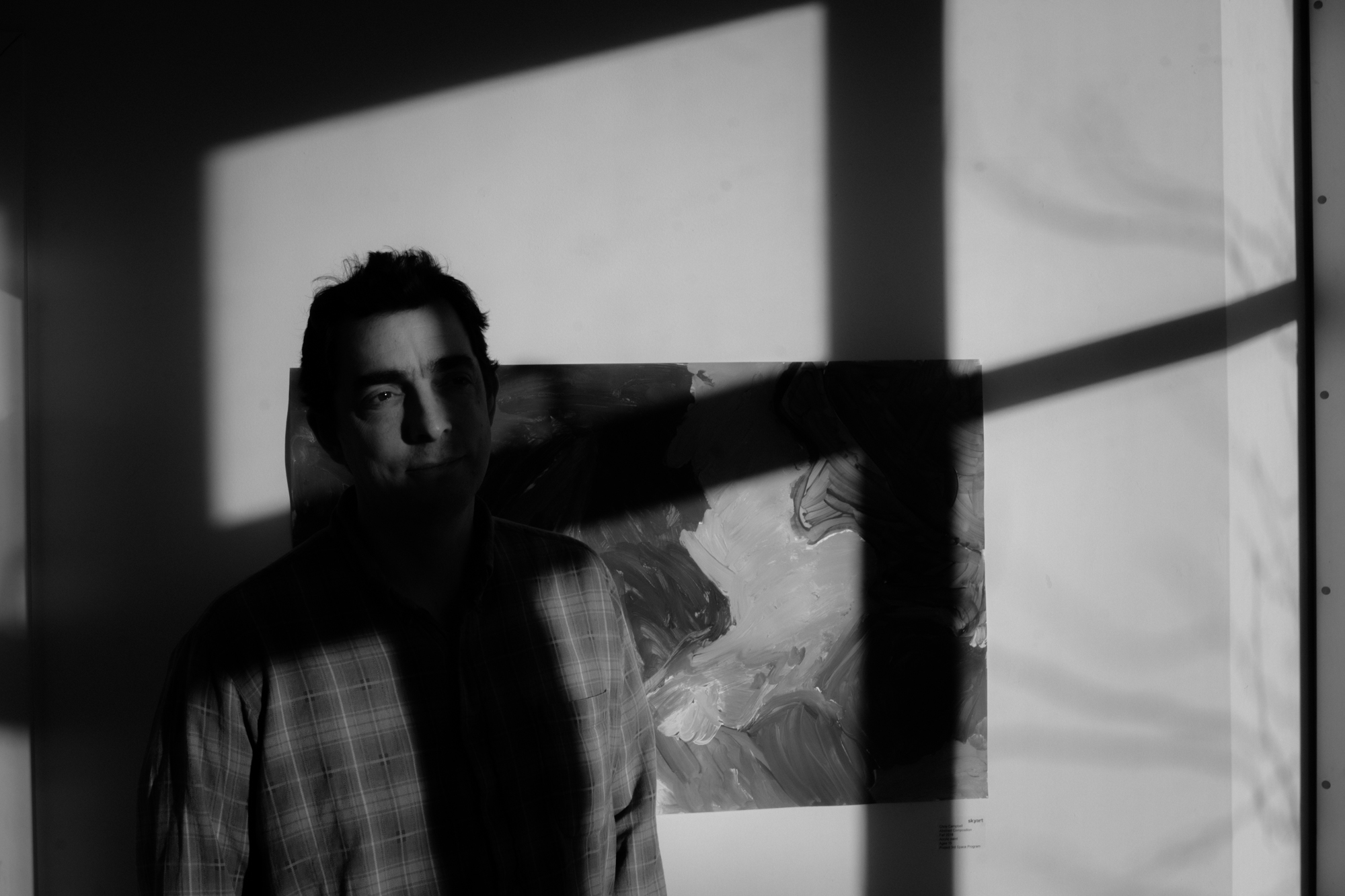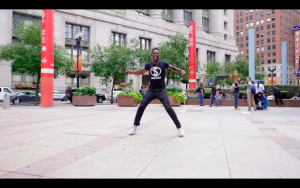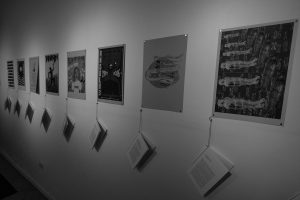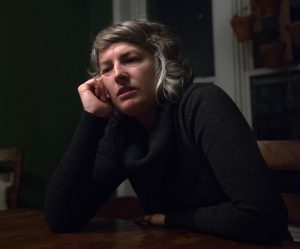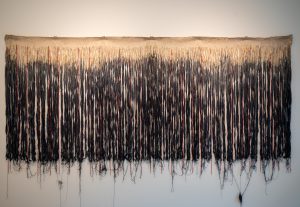Across the U.S., 2.3 million people are being held in correctional facilities. Around 536,000 of them are being detained pretrial—more than most countries have in their jails and prisons combined. And as much as our prison population swells with people serving life sentences, shorter-term pretrial detention, and the architectures and logics that come with it, are distinctly American.
Cook County Jail’s brutalist facility looms over 96 acres of Chicago’s Little Village neighborhood. It is the largest single-site jail in the country. In 1985, the average daily population was about 5,000. By 2012, that number had nearly doubled. An estimated 90 percent of those incarcerated at Cook County Jail have not been convicted of a crime but are being held in pretrial detention, often because they can’t afford to pay the bond set during their pretrial hearing.
Late last year, after Chief Judge Timothy Evans ordered court judges to set bail only in amounts defendants could afford, the average bond amount in Cook County fell by over 80 percent, from nearly $134,000 in 2016 to $22,000 in 2017. In a matter of months, the jail’s population dipped below 6,000 for the first time in decades. However, a new study released by the Coalition to End Money Bond estimates that 3,000 people remain at Cook County Jail because they can’t afford their bonds.
Part of the effort to reform the jail has included increased programming for people in this liminal space between sentencing or freedom. One such program, Just Art, is an all-volunteer program that began in July 2015. Built around a weekly open studio art session, Just Art aims not to be an educational or service program, but a “social sculpture.” Social sculpture, a term introduced by German artist Joseph Beuys, describes an approach to art-making in which everyone is an artist and everything can be approached creatively, to socially transformative ends. As such, Just Art is a long-term engagement with the Cook County Jail, wherein everyone involved—detainees, teaching artists, and jail staff—attempt to create a space that runs counter to the logic of incarceration, from within that system.
From the outside, Cook County Jail’s organizational structure can be confusing, and it is constantly in flux. There are six currently active “divisions,” or buildings containing dormitories for detainee housing. These divisions vary in size, security classification, and layout. Detainees are often moved between divisions, and entire divisions are sometimes vacated. Programs like Just Art are often at the mercy of these opaque reorganizations: midway through Just Art’s third year of programming, the building where they’d had classes, Division II, was closed, and they were moved to Division IV, then to Division X, and may be due to move again as the programs grows.
As part of the Envisioning Justice initiative, Just Art has partnered with SkyART, a South Chicago-based nonprofit that provides accessible art programming to young people. Together, SkyART and Just Art have expanded their programming to two weekly classes at Cook County Jail and one at the Juvenile Detention Center.
I met with Billy McGuinness, founder of Just Art, over coffee to talk about the inception of the program, incarceration, and art’s liberatory potential.
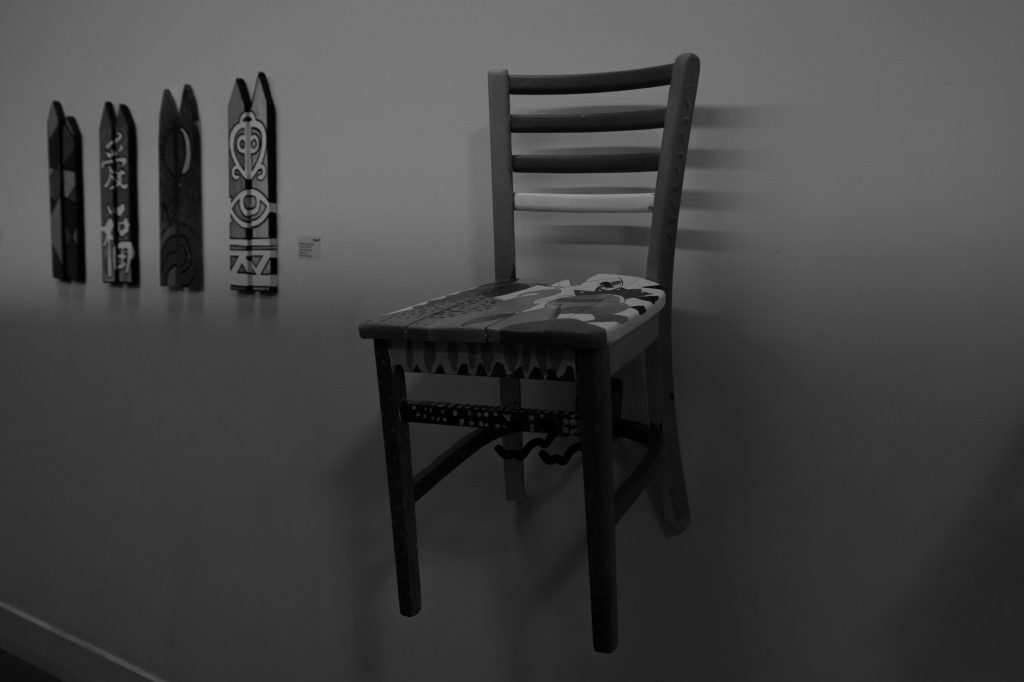
Jordan Sarti: Can you talk about how Just Art started?
Billy McGuinness: Sure. So I first visited the jail in fall of 2012, as part of a class at the School of the Art Institute of Chicago [SAIC]. We were going every other week into what was then Division XIII, and we were making videos with detainees in that division. This was a minimum-security division, which I don’t think exists anymore, but it was an SAIC class with Tirtza Even, and that was my introduction to Cook County Jail. I had just moved to Chicago and I was in this class, and I became very interested in the jail and started doing research on it.
I started by looking at the jail website, looking at the inmate locator, realizing that through the inmate locator—which is ostensibly set up for friends and loved ones to be able to locate someone that they care about that’s locked up—I was able to access information on all of the detainees at the jail, simply by putting any letter of the alphabet in the “last name” search field. So I did access information about people in jail, and I looked at their photographs, and I read their names and their arrest records under information about them.
And I was in graduate school at the time—I was in a photography department—so I was thinking a lot about those mug shot photos, which I had access to, and feeling that there was some injustice there that I had access to these photos, and decided to make work about the photos. Which, with the help of my advisors in grad school—they were very thoughtful, helpful people—ultimately became a project wherein I was writing to detainees to let them know that their photo was available—many of them were not aware of that—and asking for permission to show their photo, as part of an art exhibition, right, as part of an art piece. And the conceit was that if I didn’t get someone’s permission the photo wouldn’t be shown, but that I would always display all of the photos, I would just display them face-down, if it were on a table, or with the image facing the wall, if it were on a wall. So there were only ever a small handful of images that I showed, because only a small handful of my letters ever reached anybody, and even fewer ever responded, and not all that did gave me permission. And I think my favorite responses were the ones that said, “No, you can’t use my picture.”
But even though I was feeling like this was a good project, a good art piece, I was not satisfied doing that, and I was going to bed one night and realized that if there was actually an injustice here, that to just make an art piece about it was a somewhat anemic response, or to limit my art piece to doing this thing with photos was an anemic response, and that I should actually try to get the situation changed. So that led me to contact the Cook County Sheriff [Tom Dart], which I did repeatedly throughout the fall and winter of 2013 into 2014.
The bureaucracy was not immediately receptive to my suggestion that their website was wrong or that they should change it and make it harder to access detainee info. But eventually I got someone who said, “Well, what we can do is we can increase the amount of language on the website that indicates that pre-trial detainees are innocent until proven guilty.” And this was revealing, in that there was no language at the time that said that, anywhere on the website that I could find. And I pointed that out to them: “More language would be an improvement, because there’s none right now!” But to the credit of the County, they were good to their word and did add that statement to the inmate locator.
And I was encouraged that they made that change. They did add the language. And then I persisted to suggest that the website still needed to be changed, and I got a very curt reply from someone in the press office, who said, “We appreciate your advocacy, but we’re leaving the website the way it is.” And I proceeded to research what other jails around the country did and did a sort of blow-by-blow comparison of where Cook County fell among the top 10 pre-trial detention centers in the country, and found that it was in fact the most permissive, as far as making detainee information available.
I wrote this all up in a letter to the Sheriff, sent that, and persisted in my communications until finally, six months into this effort, I got a call from the Executive Director of Cook County Corrections, who said, “We’re changing the website.” And, not presuming that it had anything to do with my advocacy, I asked why they were doing that, and I was happily surprised when she said, “The Sheriff read your email and he was persuaded.” And so I was encouraged to know that just really through persistence and careful communication, I could make a change in the jail. But I didn’t want to miss my opportunity while I had the Executive Director on the phone to do more, so I said to her—and this was Kara Smith—I said, “I’m so glad that you changed your website, because I don’t want to make art about your website, I want to make art with detainees inside the jail.” And that started a journey that ended in July 2015 when I started programming in Division II.
JS: So, the next question that I wanted to ask is about the challenges that you’ve faced in the history of Just Art. From what you’ve said, it seems like the jail can be an unstable space, where things are constantly shifting. Can you give a rundown of some of the day-to-day challenges that the program faces?
BM: As you would imagine, there are many challenges, and they come in a lot of different forms. I think one of the biggest challenges is just being in a space of human confinement, with all of the anxiety, fear, and despair that is naturally generated there. And that’s a larger, more abstract response to your question—there’s lots of practical challenges, too—but I think we downplay the significance of what’s going on inside the walls of the jail energetically.
And I often think about people who are afraid to go into the jail—people who say they want to volunteer and then they don’t go—but I wonder what it is they’re afraid of, if it’s fear that’s keeping them from the jail. And I think we can’t be reductive—but I’m going to be reductive—and I’m going to suggest that, before you go inside the jail, you might be afraid of the people that are locked up. The minute you’re inside the jail, you realize that’s not the scary part. The scary part is what the jail is, and how it can be for people. That’s the scary part.
It’s just a very intense space, and I remember walking through the compound—one of my very first visits—and it was amazing how sort of free the correctional officers were with me. I was shown the way from the entrance on California to Division II, which is actually quite a ways through the campus to get there. And I was walking alone. There was no one escorting me. And I felt like I was in a ghost town, because you can just feel the energy of all the human beings, but you couldn’t see anybody.
So that’s a challenge. Obviously it’s a tiny challenge for somebody who’s volunteering there once a week, and it’s a huge challenge for people who are locked up there. But there are many other challenges just in terms of the jail being, as you mentioned, unstable. It is an unstable space.
And I think that another thing that might be a little opaque until you’re experiencing it yourself is the difference between jail and prison. We use the words interchangeably all the time, which leads to a lack of clarity about the differences between the two institutions. Jail is a liminal space, it’s a holding space, it’s a space where you go where you’re awaiting trial or, during your trial, awaiting sentencing or awaiting a decision on the status of your case. And so it’s a waiting space, as opposed to the prison, which is a space where things are a little bit more settled. Yes, you’re waiting to get out, but you know where you’re at and where you’re going to be, whereas in the jail, things are much more uncertain. And so there’s an increased anxiety and a sense of instability that animates everything that happens there—not so much for us as volunteers, but for the men and women who are locked up there. And they bring that with them into the program, obviously, because it’s the reality they’re dealing with.
So the uncertainty of the jail is really a tough thing. It’s a challenge. And that manifests in terms of the program in simple ways, like showing up and being told, “There won’t be any class today.” Or showing up and being told, “Half the guys are gone. They’ve been moved.” Or showing up and being told, “One guy’s gone because he said the wrong thing to the wrong person, or was in the wrong place at the wrong time, and now he’s in the hole, or now he’s been transferred.” Or just, you know, “Someone’s got a visit,” or what have you. There’s lots of different things that come up.
JS: Yeah, I can imagine. So what are the participants of the program like? Are there people that you’ve been with for a long time? Have you been able to form relationships? Who are they?
BM: Hmm, well, that’s a good question. You know, demographically, the population [of the program] is reflective of the Cook County Jail population generally. So it’s largely men of color. Just Art has, not up until this point, done programming with women. We’ve worked exclusively with men. There’s a fairly broad age range. I would say we do get a few younger guys, like early 20s, but maybe the average or median age would be closer to 40. So it’s a pretty broad range, from early 20s up to late 60s, with the vast majority probably being around mid-30s, early 40s. We refer to the people that we work with as “the guys”—[laughs] that’s just how we talk about it, “the guys.”
And I would say the guys are—I mean, everyone is different—but in general they’re really motivated, and smart. Which shouldn’t be surprising and hasn’t been surprising. Maybe how smart, and how motivated the guys have been has been just kind of amazing. To compare to, say, undergraduates at the School of the Art Institute, you know, who have many privileges and advantages as a group. To go from working there to working at the jail, and to find students or participants or “the guys” at the jail seeming in some respects more motivated, more focused, more enthusiastic, more open-minded—as a group—than maybe the typical undergrads in an art school.
When we were in Division II, because we were there for so long, we were able to develop relationships with the guys. And there would always be the odd person who showed up one week and then we never saw again, and frequently we would never find out why we never saw them again. But most of the guys that we worked with opted into the program, so they were there by choice to begin with, they had interest.
If they didn’t bring experience in art—and many of them did; many of them were really incredibly skilled artists—they brought an enthusiasm to build skills or to have a certain experience or new experience—so there was a lot of material there to build a relationship from, and we had time to do that. You can look up the average length of stay at Cook County, but I don’t think it’s a matter of months. For a lot of the guys we work with, it’s measured in years. That’s another challenge, is that it’s meant to be, “You have a right to a speedy trial, jail is meant to be temporary….” But bail is often set so high that, despite a general lowering of bail amounts over the last few years, many people still can’t bond out, and the system, despite the best efforts of the people who have to make it work, moves slowly enough that people are there for a much longer time than they really should be. Which means that we would see the same guys week after week after week. And I would say probably the longest anybody was in our program maybe would be 18 months. I think there were a few guys that probably were there that long, [who were] sort of there at the very beginning and there almost the whole time.
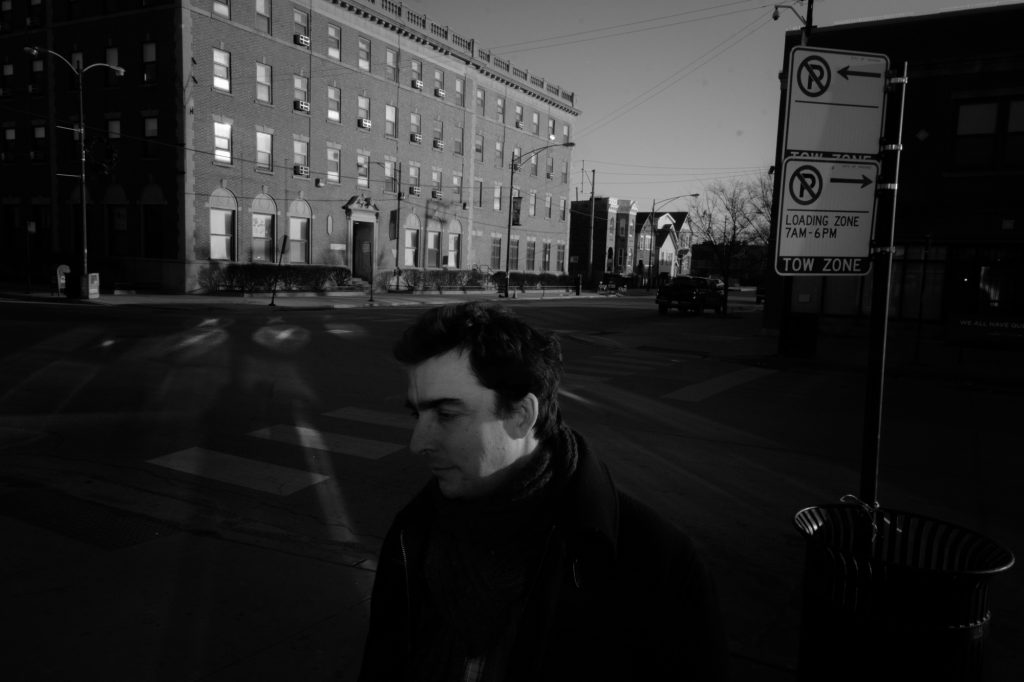
JS: Yeah… do you get a sense that a lot of them are pre-trial, like most of Cook County?
BM: All the guys that we work with are pre-trial.
JS: Do you have a sense of how many programs are available? Or what the average person in Cook County’s day-to-day experience is like? I mean, it may be more than you’re privy to, but—
BM: Yeah, I can just share what I know from my experience, which is that it’s a mixed bag. I know there are quite a few options for programming. Whether or not those are open to detainees is another question that’s beyond me. I know that at least at the time that we were offering Just Art in Division II, one of the detainees we were working with, who’d been there since 2013, he said that, as different personnel come into the jail, access to programming changes. So some administrators are more restrictive. They might change, for instance, in the case of this person, he was very close to getting his certification through the barbering program, and maybe a week or two before he would have gotten his certification—which would have meant he could be employed on the outside, he would have had a license—the program was changed and his charges made him ineligible for the program.
Something that we’ve said from the beginning is that we don’t want to restrict anyone’s interest in being a part of Just Art, so anyone can be there, regardless of their charges. The terminology is “violent offenders,” which is kind of a misnomer, because that presumes guilt—but people charged with violent crimes. Anyway. So yeah, there’s a little bit of opacity as far as who’s doing programming, what the programming is. I know there’s a lot of religious programming, I know that there’s a couple of a different art programs, art therapy programs, yoga, meditation. But, not enough. Not nearly enough. And mostly guys just talk about really having nothing to do and being very bored most of the time.
JS: So what kind of art comes out of the work that you all do?
BM: That’s a good question. Just Art programming is distinct from traditional art education in a kind of key way. Where a traditional art education model places emphasis on the development of art skills with the understanding that there are secondary indirect benefits that participants will glean through focusing on those skills—increased curiosity, increased sensitivity, improvement in critical thinking, ability to relate to others, and so on—we flip that. We emphasize those secondary benefits. We make them primary. And we take for granted that—through the development of curiosity, communication, relationships with others—art skills will be learned in the process. Hopefully that makes sense.
But because we prioritize being together—that’s the point of the thing—what comes out of the program is actually quite varied. So you’ll have, you know, sitting side by side someone who’s actively trying to realistically draw a boat, and practicing from a book that, you know, teaches the basic elements of drawing, how you structure a three-dimensional object with a pencil. And right next to that person will be somebody working very freely with oil pastels, and making very expressive, abstract expressionist gestures. And lots of things in between. And, again, we really strive to provide a platform where we can support someone’s art without dictating what it’s supposed to be.
JS: You kind of got into this a bit, but could you say a little more about how you see this program in relationship to maybe other kinds of art therapy programs at the jail, or occupational therapy?
BM: Yeah. I think that’s great. And, just to say, for the record, by stressing the difference between our approach and, say, a traditional art education approach, we in no way intend to devalue that other approach. In fact, we believe really strongly that you need a whole suite of different approaches, you need a broad variety of opportunities for people to grow, and the more approaches the better. Including the difference between, say, art therapy and what we do.
With art therapy, I think they sort of foreground that it is therapy—and that can manifest in lots of different ways, depending upon the therapist who’s providing that experience or guiding that experience. But I think that, while we’re not trained art therapists and don’t in any way pretend to be doing therapy, we take for granted that art itself is, inherently, a therapeutic practice. We don’t need to foreground that it’s therapeutic. Our bias is to be together and to have this shared activity together. And we’re a little, I think in that regard—and I’m no expert on art therapy—we’re a little less focused on, you know, “What is your trauma?” and “Let’s work through that,” or “Let’s use art as a way for you to work through your trauma,” which might be the mindset of an art therapist. We’re much more like, “Let’s hang out and be creative together.” And through that process we can all heal. We can all work on our collective trauma. Or, we can just have non-traumatic experiences together and let those experiences accumulate.
JS: That makes sense. So, is there anything that you wish people who are on the outside, who may not have experience with the criminal justice system, knew or were more aware of about jail? Or Cook County Jail, in particular?
BM: Many things. I think– I mean, the basic, most fundamental piece of information I would love for people who are not familiar with the jail to understand is that we really are always talking about people. We are always talking about human beings. It is very easy to reduce a human being to a stereotype and move on. And, more often than not, that stereotype is a negative one, that people who are locked in the jail are “criminals,” but even a seemingly empathetic stereotype can be harmful. So, “Oh, those people are all innocent victims, those people that are locked up in the jail.” That’s not necessarily helpful either. Right? Everyone at the jail is a human being—and that includes the people that work at the jail, the law enforcement officers and the staff members in the Sheriff’s office. They’re all human beings. It’s a human institution. And that’s important, just because there’s a lot of damage that can be done by perpetuating stereotypes.
But something else about understanding that these are all human beings is understanding that, because it’s a human institution, it can change. Human beings change all the time, and human institutions can change. So that’s important for people to understand.
Another really important thing, directly related to understanding that there are human beings locked up in Cook County Jail, is understanding that those human beings, aside from a very small percentage who have already been convicted—and I think it’s less than 5%, who have been convicted of minor crimes and will serve out their sentence at Cook County Jail or in the County’s custody in some way—the vast majority of pre-trial detainees are in fact innocent.
That’s a principle that is supposed to define our criminal justice system. “Innocent until proven guilty.” Unless we are able to maintain that, and really embrace that principle as being true of people who are incarcerated in the jail, it ceases to be true, right? That’s only true if we maintain that. So we cannot– It’s really– We’re all susceptible. I’m doing this work and I have to remind myself all the time, “Everybody in here, for the most part, is innocent, until they’re proven in a court of law to be guilty of something.” And that’s, you know, it’s so very important. Because the minute you see somebody as a criminal, so much damage is done. So much damage is done. That should be obvious, what that means.
However, even when someone is ruled to be, or pleads, guilty, they deserve the same treatment—humane treatment, programming, healing activities to engage in. So, when someone is found guilty, that doesn’t mean we should change our attitude toward them! And I just want to make that point, lest anybody miss the significance of that. We can’t “lock people up and throw away the key.” All of those clichés are really harmful.
JS: Yeah.
BM: What else should people know? I think they should understand that—this is a small detail, but I think it’s important—that there’s not enough programming. There’s not enough for people to do. That one of the most damaging aspects of the criminal justice system is the extent to which it criminalizes the people that are caught up in it, which is to say the people who have in fact committed a minor crime, by virtue of their experience in the carceral state end up developing criminal attitudes and behaviors because they’re treated like a criminal, as opposed to being treated like a human being. And it’s important to realize that the people who run the jail are trying to be humane. They are limited by realities of the system that are often beyond their control. There are aspects to this system that we all must take ownership for. So for me there can’t be enough programming. Rehabilitation really requires sustained exposure to alternative activities and, short of that, it’s a tall order to ask anybody to go through the criminal justice system—even if they aren’t sentenced to prison time; even if they only experience the criminal justice system by spending a year or two in jail—it is really hard to go through that experience and not come out impacted in such a way that it’s hard—harder—to change your life in a positive direction, or move in a positive direction.
JS: Absolutely. The last thing I wanted to ask you is if there are any hopes or plans you have for Just Art in the near future, or in the long-term future?
BM: Yes! I think, in the short run, we are, of course, anxious to get our art programming back up and running at the jail. (Our writing workshop is happening, but our open studio art program is temporarily offline.) We’re encouraged by the support that we’ve received from Illinois Humanities and grateful for the support of the County. We are hopeful that we can take advantage of this opportunity of having some support and having some public exposure to generate more support for our work, so our work can expand. We say with absolute sincerity—and we have said this from the beginning—that we’d love to see the jail transformed over time into a school. So, a long-term goal is for the Cook County Jail to become an educational campus where people go there and receive all of the benefits that somebody might receive by going to college. That’s a long-term goal for Just Art, is to turn the jail into a school.
This article is published as part of Envisioning Justice, a 19-month initiative presented by Illinois Humanities that looks into how Chicagoans and Chicago artists respond to the impact of incarceration in local communities and how the arts and humanities are used to devise strategies for lessening this impact.
Featured Image: Billy McGuinness poses for a portrait in front of artwork at SkyART’s community center in South Chicago. Geometric shadows from the window cut across the image. Photo by Sebastián Hidalgo.
Jordan Sarti is a writer and journalist in Chicago. Her writing has appeared in In These Times, HYSTERIA, Temporary Art Review and Slutist. Right now, she is thinking about body politics, carceral capitalism, and plants. In her spare time she invents increasingly intricate ways to rest.
